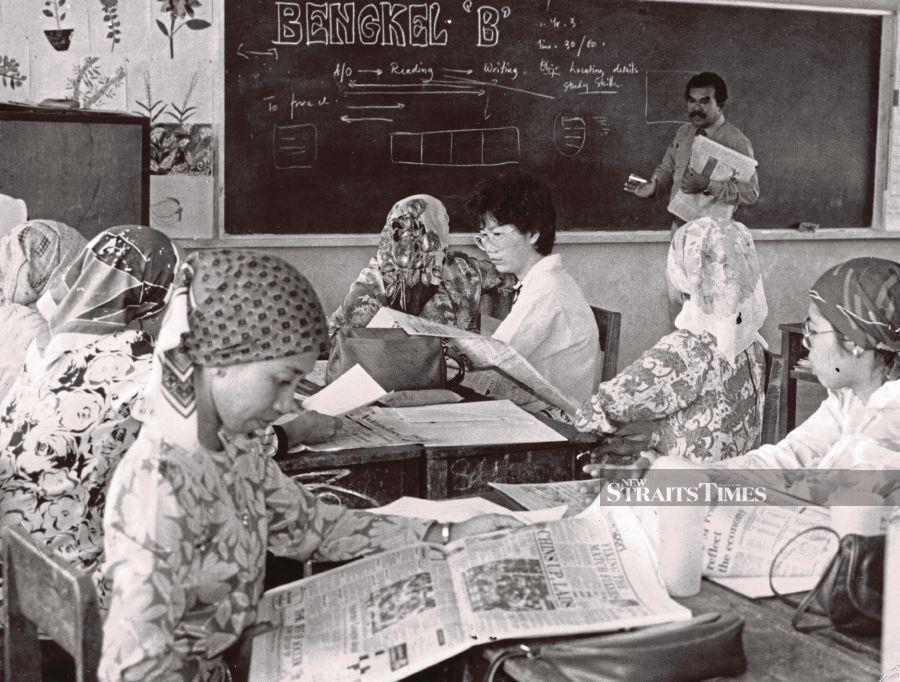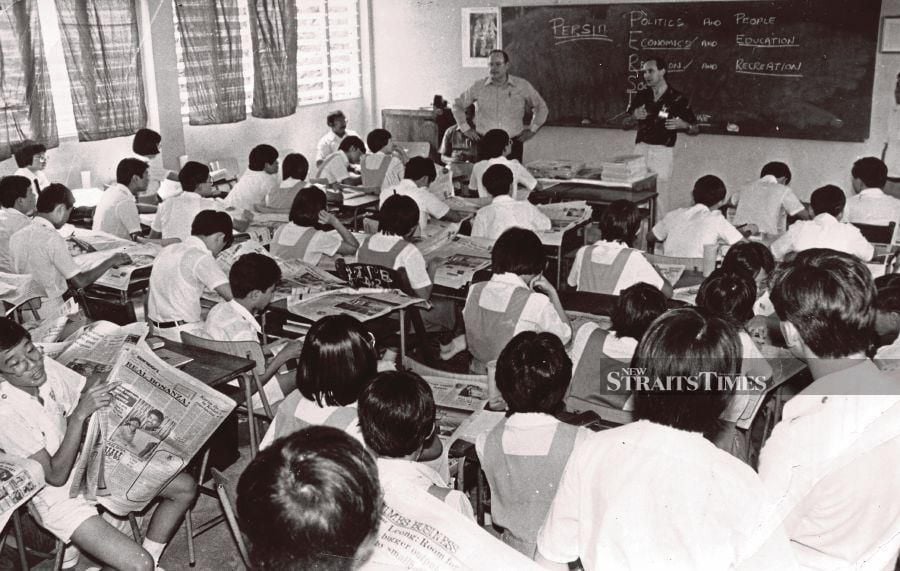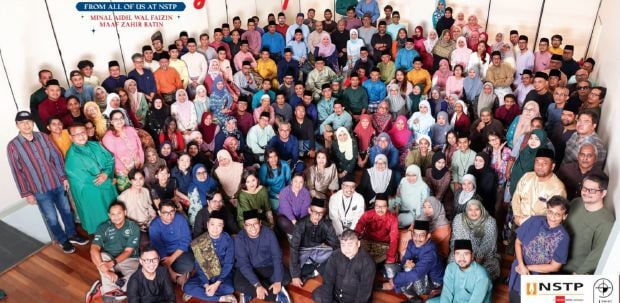
WHEN Tun Abdullah Ahmad Badawi, then the education minister, officially launched the New Straits Times' newspaper-in-education (NIE) programme on Jan 6, 1985, he said: "We must welcome this new programme and give it a chance to succeed because it is a good programme that helps students to keep abreast of the changing world."
The New Straits Times was not only the first newspaper in this country, but also in Asia, to embark on the NIE venture 35 years ago, naming its programme the NST Newspaper-in-Education.
Six months later, NST's sister paper, Berita Harian, which is a Bahasa Malaysia daily, launched another NIE programme called Akhbar Dalam Darjah (ADD).
Originating more than 80 years ago, NIE programmes were initiated by newspaper companies worldwide that were committed to assisting in the education of their community's young people.
The core values of the programme fall on the newspaper content, and how teachers can use this reading material as a tool to teach the many facets of mandated educational frameworks and standards.
While other international NIE programmes focused on newspapers as a valuable teaching-learning resource in virtually all subjects — mathematics, science, history, geography, etc — NST NIE had a narrower focus.
It focused on the use of the newspaper as a tool in the learning and teaching of English.
The NST played the role of a "living textbook" to complement and supplement efforts by the country's education system to promote English as the second language, and its importance as an international language of commerce, diplomacy and knowledge.
From the very beginning, NST NIE has worked very closely with the Education Ministry, universities, teacher training colleges and schools.

When John Pillai, a teacher-turned-journalist who was the first NIE editor, began establishing the foundations of NIE in Malaysia, he was supported by a team of resourceful people drawn from the teaching profession.
During the early days, thousands of teachers and lecturers in every state learnt how to use NST as a resource in the teaching of English through the many NIE workshops conducted.
Thousands more of their students had benefited from the use of this newspaper in their English language lessons.
Moving ahead than just being a tool in the classroom, NST and the Education Ministry launched a newspaper recycling project in 1992.
The National Environmental Education Project was to create awareness and encourage efforts to protect the environment among schoolchildren.
In 2002, the programme expanded with dedicated education supplements published in the NST on selected days, starting with Primary Plus, The Next Step and later followed by Look & Learn. These pages carried English language learning resources for teachers, parents and students.
Later in 2011, School Times was introduced in collaboration with the Education Ministry and distributed to 500 sponsored rural and semi-urban schools nationwide.
These supplements were additional to other print engagements that focused on education news like Learning Curve (launched in 2002), which was replaced with Higher Ed in 2017.
Other products were also conceived as part of NST's youth development through teen lifestyle content, with edutainment being the focus in sections like YouthQuake and Niexter — written by teens for teens.

The Journalism on Campus project in 2010 allowed joint publication of individual campus newspapers by universities and NST.
NST's focus on education was not only reflected in partnerships between the press and educators, but also with many corporations which have similar commitment in education.
Ground activities like workshops for teachers and students supported corporations' sponsorship of the newspaper for schools.
An adult training programme called News@Work, focusing on language proficiency and media relations for corporate organisations, promoted the use of NST to improve one's English through the media.
In 2008, NST and RHB Banking Group launched a nationwide spelling competition to encourage the use of English and promote the newspaper's commitment in strengthening the language proficiency among Malaysian students.
The Spell-It-Right Challenge that lasted for 10 years became the largest and longest running competition that had not only grabbed the attention of students and teachers, but parents as well.
Education plays a critical role in the growth of a nation, and NST has chosen to be a part of this country's journey in nation-building through its NIE programme.
For me, to be part of this journey in the last 20 years, beginning my career in NST as an NIE coordinator, has brought me to many classrooms in schools — in all corners of the country.
Thirty-five years down the road, the success of NST's NIE throughout those years can be attributed to the cooperation and contribution of many.
The NST enabled many Malaysians to improve their knowledge and skills in the English language, and hopefully, it will continue to play its role for future generations.






